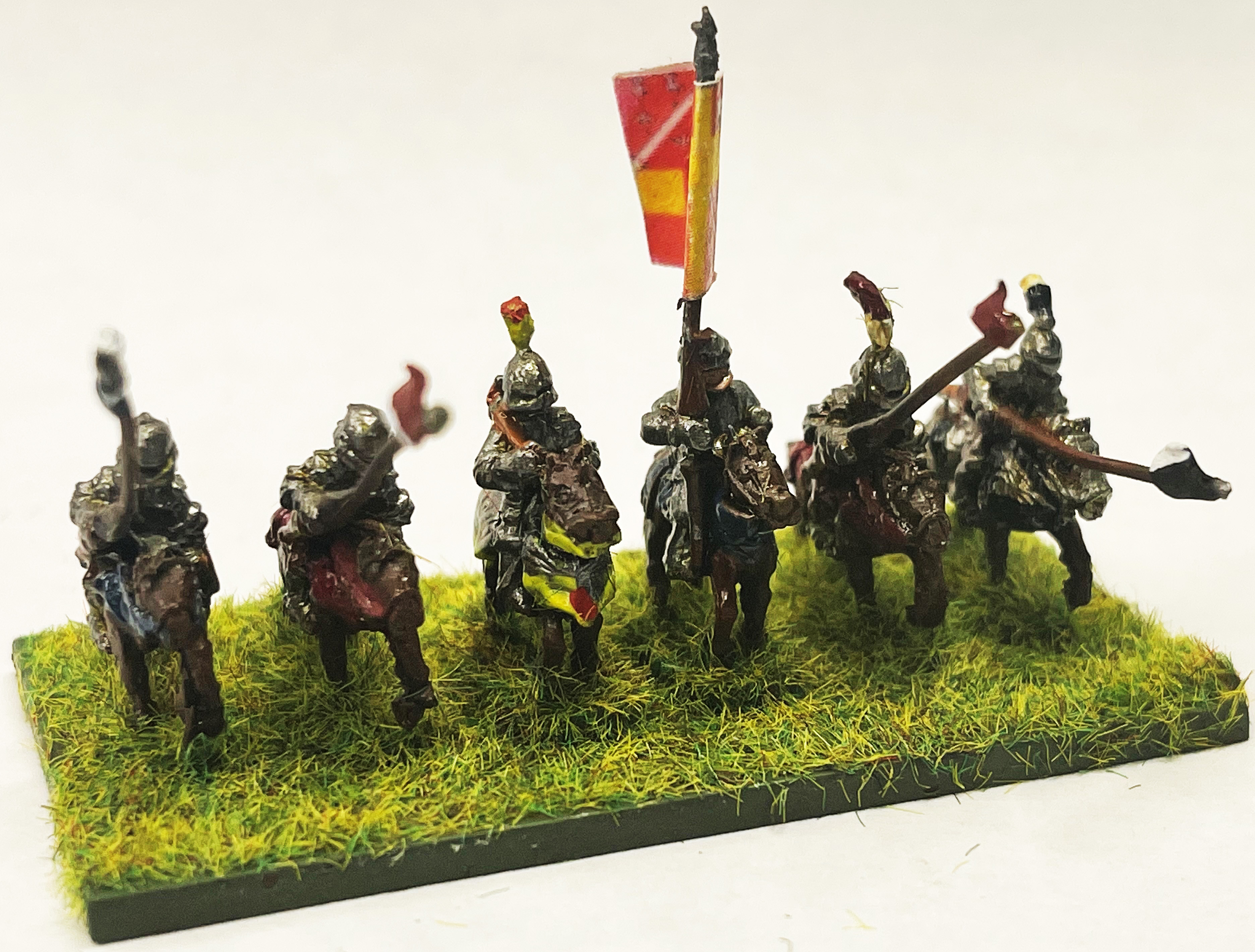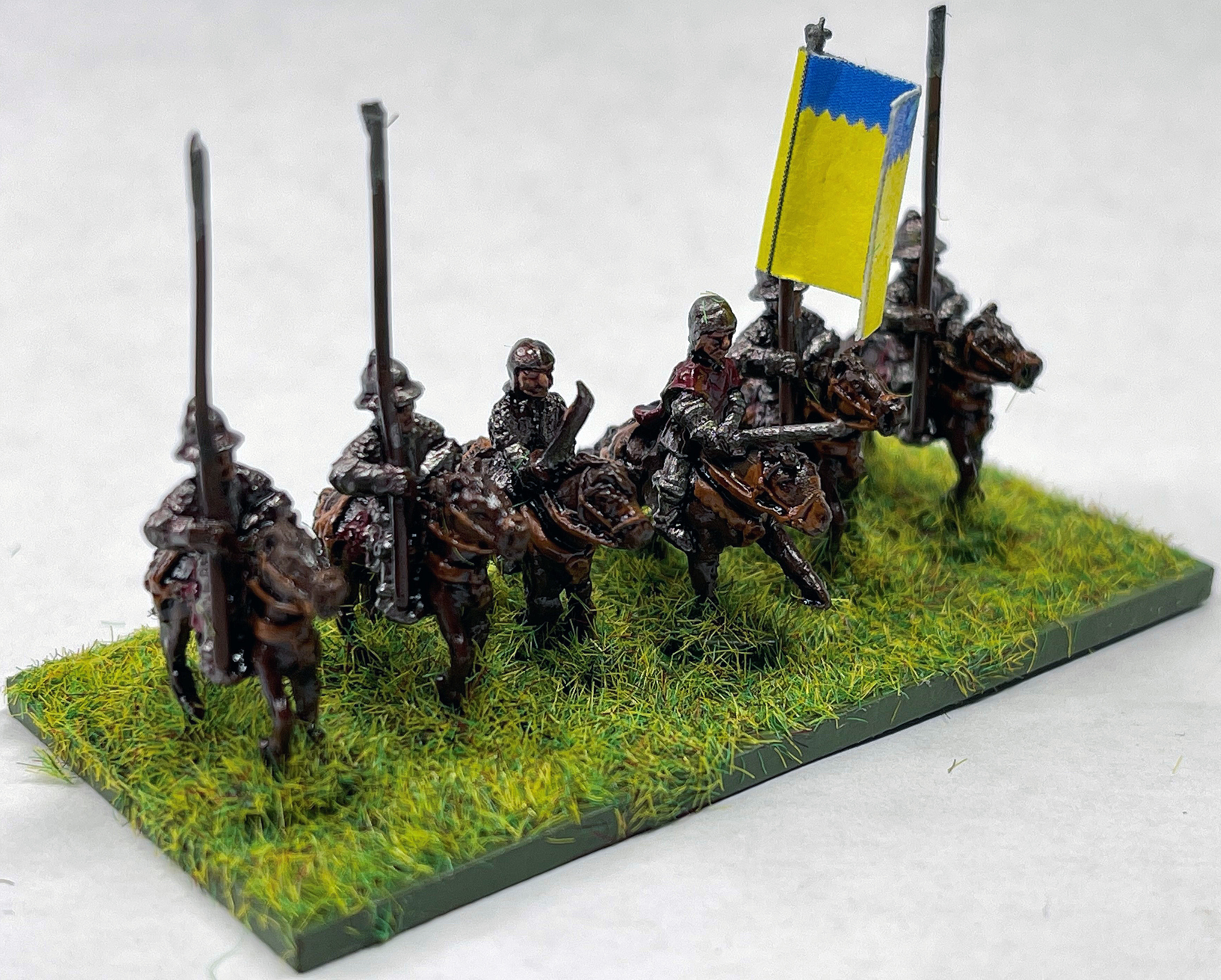Finishing off the cavalry at a gallop
20 April 2021
I charged wildly into the cavalry with my brush, paints and washes. However, my speed meant I made a couple of mistakes through an occasional lack of attention. I need to avoid that as as I move into painting the foot troops.

Venables Mounted Men at Arms

Lumley's Mounted Men at Arms
The English Man at Arms in the early 1300s were the same as their European brothers and served as heavy cavalry on the battlefield. However, this all changed against the Scots at Dupplin Moor in 1332. The English deployed their men-at-arms dismounted, basically creating armoured heavy melee infantry, alongside archers with longbows.
The English men at arms were still highly effective in mounted fighting, though in this period they were mostly used to pursue routers, raid villages and weakening the enemy resolve. In this role they would have been supported by Hobilars.
Some contingents have bases of Hobilars that support the heavier cavalry. Being a lighter cavalry, they would have lesser armour and lighter weapons and mainly work around the edges of the battlefield. And in addition to this role they would also be flanking and harrying the opposing foot, chasing any fleeing troops and hopefully engaging any retreating militia and archers.

Troutbecks Hobilars
As an aside, the term Hobilar (Hobelar) was disappearing by this period. So they would probably have been called "prickers", “scourers” or "forerunners" and would have been used before the battle to scout ahead and locate the enemy. However, I’ve decided that Hobilar sounds a great deal better, so I’m going with that.
Now on to our spot the difference contest. Below I have two pictures of the same base of mounted hobilars but they are different in that there is a mistake in one of them. Can you find it?


Legh's Hobilars
I am thinking of taking a small break before attacking the painting of the Infantry elements of the battle. Let’s see how long that lasts.